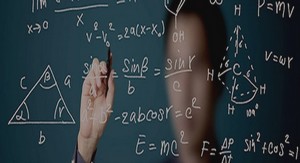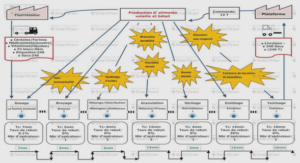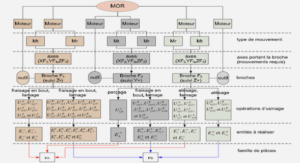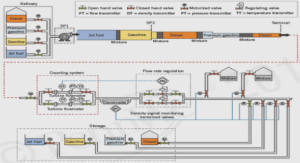Functional analysis
Functional analysis is the branch of mathematics, and specifically of analysis, that is concerned with the study of infinite-dimensional vector spaces (mainly function spaces) and operators acting upon them. It is an essential tool in the proper understanding of all kind of problems in pure and applied mathematics, physics, biology, economics, etc. Functional analysis is particularly useful to state the adequate framework for the existence and uniqueness of the solution of these problems, and to characterize its dependence on different parameters of them. Some classical references are Brezis (1999) and Rudin (1973). Other references are Griffel (1985), Reed & Simon (1980), and Werner (1997). A vector space is a set E for which the operations of vector addition and scalar multiplication are well defined, i.e., such that the addition of any two elements of E (called vectors) belongs to E, and such that the multiplication of any element of E by a scalar of a field K (either C or R) belongs also to E. A normed vector space corresponds to a vector space E that is supplied with a norm, i.e., with an application k · kE : E → R+ that fulfills for all u, v ∈ E and α ∈ K:where 0E denotes the null element or zero vector of E. A norm induces a distance on the set E that determines how far apart its elements are between each other. The distance d(u, v) between any two elements u, v ∈ E is then defined by d(u, v) = ku − vkE. (A.405) A norm characterizes the topology on E and thus the notion of convergence on this set.
Banach spaces
A Banach space is essentially a normed vector space that is complete with respect to the metric induced by the norm. It receives its name from the eminent Polish mathematician and university professor Stefan Banach (1892–1945), who was one of the founders of functional analysis. A normed vector space (E, k · kE) is said to be complete if every Cauchy sequence in E has a limit in E. A sequence {un} ⊂ E is of Cauchy if for all ε > 0 there exists an integer M such that kun − umkE ≤ ε for all n, m ≥ M. In other words, it holds in a Banach space that if the elements of a sequence become closer to each other as the sequence progresses, then the sequence is convergent. b) Hilbert spaces A Hilbert space H is a Banach space where the norm is defined by an inner product. It is named after the German mathematician David Hilbert (1862–1943), who is recognized as one of the most influential and universal mathematicians of the 19th and early 20th centuries. A Hilbert space is thus an abstract vector space that has geometric properties. An inner or scalar product is a positive-definite sesquilinear form (·, ·)H : H × H → K, which satisfies for all u, v, w, x ∈ H and α, β ∈ K
Linear operators and dual spaces
Let E and F be two Banach spaces with norms k·kE and k·kF , respectively. We define a linear operator as an application L : E → F that satisfies for all u, v ∈ E and α, β ∈ K: L(αu + βv) = αL(u) + βL(v).We denote by h·, ·iE′ ,E : E ′×E → K the scalar duality product between both spaces, which is a bilinear form. If L ∈ E ′ is given, then the application hL, ·iE′ ,E : E → K is linear and continuous. For L ∈ E ′ and v ∈ E, the notation hL, viE′ ,E is thus equivalent to L(v), but can be also understood as v(L). The duality product, analogously as in (A.415), fulfills |hL, viE′ ,E| ≤ kLkE′kvkE ∀v ∈ E, ∀L ∈ E ′ . (A.419) When the underlying field K is the set of complex numbers C, then the dual space E ′ is frequently taken as the space A (E, K) of all antilinear and continuous functionals from E to the field K. In this case the duality product becomes a sesquilinear form, i.e., a form that is linear in one argument and antilinear in the other. An operator A ∈ A (E, K) is said to be antilinear or conjugate linear if for all u, v ∈ E and α, β ∈ K: A(αu + βv) = αA(u) + βA(v). (A.420) The topological properties of linear and antilinear operators are the same, and they differ only on the issue of the complex conjugation. Clearly, if K = R, then the distinction between linearity and antilinearity disappears, and the sesquilinear forms become bilinear. We remark that the roles of linearity and antilinearity can be assigned at will in the duality product, when consistency is preserved. Duality can be thus understood either in a bilinear or in a sesquilinear sense (and even a biantilinear sense could be also used). We can also define the bidual, double dual, or second dual space E ′′ of E, i.e., the dual space of E ′ , which is the space L (E ′ , K) of all linear and continuous functionals from E ′ to K. In this case we consider the duality product h·, ·iE′ ,E′′ : E ′ ×E ′′ → K, which is again a bilinear (or sesquilinear) form. The space E can be then identified with a subspace of E ′′ if we use a linear mapping J : E → E ′′ defined by hL, J(v)iE′ ,E′′ = hL, viE′ ,E ∀v ∈ E, ∀L ∈ E ′ . (A.421) The subspace J(E) is closed in E ′′ and J is an isometry, i.e., kJ(v)kE′′ = kvkE ∀v ∈ E. (A.422) Thus J is an isometric isomorphism of E onto a closed subspace of E ′′. Frequently E is identified with J(E), in which case E is regarded as a subspace of E ′′. The spaces for which J(E) = E ′′ are called reflexive. b) Orthogonal vector subspaces Let E be a Banach space, E ′ its dual space, and h·, ·iE′ ,E their duality product. We consider the vector subspaces M ⊂ E and N ⊂ E ′ . We define the orthogonal vector space M⊥ of M by M⊥ = {A ∈ E ′ : hA, viE′ ,E = 0 ∀v ∈ M},





